Taizhou Ecological Infrastructure
2010-06-28
来源:The Growth Pattern of Taizhou City Based on Ecological Infrastructure-The Negative Approach Physical Urban Planning, City Planning Review,2005(9):76-80
分享
Project Location: Taizhou City, Zhejiang Province, China
Project Type (urban, transportation, regional, etc.): regional planning
Client: Taizhou City Government
Planner and landscape architect: Turenscape and Peking University Graduate School of Landscape Architecture
Finished:2004
Award:2005 ASLA Honor Award in Analysis and Planning, American Society of Landscape Architects
Published at: Yu Kongjian, Li Dihua, Liu Hailong, Han Xili, 2005,The Growth Pattern of Taizhou City Based on Ecological Infrastructure-The Negative Approach Physical Urban Planning, City Planning Review, 9:76-80
Narrative Summary.
1. The Background and Main Issue
The urbanization in China increases about 1% annually. There is less than about 40% of the nation’s 1.3 billion population now inhabiting urban areas, and this number will increase to more than 70% in the coming 15-20 years with cities sprawling at an unprecedented speed. In the east coast area, where this project is located, the cities grow even much faster. In this process, land is overtaken indiscriminatively for infrastructure construction and urban development. As a result, the wetlands and water system on the land were destroyed and polluted, native habitats and biodiversity are getting lost, the hazards of flood, drought hazards and diseases are increasing, and the cultural identity of the landscape is getting lost.
As a traditional approach, greenbelts were planned to stop the urban sprawl, but more than often they are realized only on the paper. One of the main reasons for the failure of greenbelt concepts is that they are usually planned more artificially and arbitrary than the urban development itself, with functions only as barriers to stop the urban sprawl processes. New and effective tools have to be developed to address a wise and sustainable development of the limited land.
Taizhou is located at the south east coast of China, with a total area of 9411 square kilometers, and a population of 5.5 million. Among them only 0.7 million people are now living in the urban area, and the urban population will increase to 0.9 million in 2010, and 1.3 million in 2020, and 1.5 million in 2030. Though quite rural and agricultural, it is now one of the fastest growing areas in China due to the booming of the small private industries. Under the influence of the monsoon climate and being adjacent to the east sea, flood has been a major hazard. As an adaptation to the storm water and flood problem, the landscape has been shaped into a unique form featured with a network of water courses that integrate natural water systems, wetlands and man made ditches, as well as cultural heritages such as bridges, dikes, dams, and vernacular landscapes. This area has long been famous for the rice, fishery and citrus. It is also critical to keep in mind that arable and developable flat area is very limited in this area.
This water network landscape, which has been effective in safeguarding the agricultural processes in the past thousands of years, is now facing the challenge of being destroyed by the speedy urbanization process beginning in the earlier 1990s. The wetlands have been filled, rivers have been straightened and channelized, cultural heritages that are not listed as protected historical relics have been destroyed, visual and recreational experiences have been totally ignored.
In addressing the above situations, a project was then outlined to guide the urban sprawl and safeguard the sustainability of the living land and using a minimum amount of land for the natural and ecological considerations.
2. The Project’s goals and objectives
In this project, the planners take land as a living system, and develop an ecological infrastructure (EI), to guide and frame the urban sprawl. The EI is defined as the structural landscape network that is composed of the critical landscape elements and spatial patterns that are of strategic significance in safeguarding the integrity and identity of the natural and cultural landscapes and securing sustainable ecosystem services, protecting cultural heritages and recreational experience.
Like the urban infrastructure providing social and economic services (such as transportation, gas, sewage, etc.) that support the potential urban growth, the EI safeguards ecological services, protecting cultural heritages, providing visual and recreational experiences.
3. Targeted processes need to be safeguarded before urban growth
Three categories of processes are targeted to be safeguarded by the ecological infrastructure:
(1)The abiotic processes: the main focus is flood control and storm water management.
(2) Biotic processes: native species and biodiversity conservation.
(3) Cultural processes: Including heritage protection and recreational need.
A geographical information system (GIS) was established to store, overlay and analyze layers of natural, cultural and social economic data.
4. Defining an ecological infrastructure at the large scale
The regional EI was planned through the identification of critical landscape patterns (security patterns) for the targeted processes. The security patterns are composed of elements and spatial positions that are strategically important in safeguarding the different processes of the landscape. Models including suitability analysis, minimum cost distance and surface models were used in the identification of security patterns for the individual processes.
Three security levels - low, medium and high - are used to define the quality of the security patterns in safeguarding each of the targeted processes.
Using overlaying technique to integrate the security patterns for individual processes, alternatives of regional ecological infrastructure are developed at various quality levels: high, medium and low.
5. Scenarios of urban growth pattern based on the regional ecological infrastructure
Using the three EI alternatives as framing structure, scenarios of regional urban growth patterns were simulated using GIS: the Adjusted Sprawl Scenario, the Aggregated Scenario, and the Scattered Scenario.
Comparative impact evaluations were made for these scenarios by a planning committee composed of decision makers of the city, planning experts from all over the country, stake holders of holders who are represented by officials from various functional departments of the Taizhou city government (including the departments of agriculture, water management, forestry, industry, tourism, finance, transportation, public affairs, security, culture education, tax, etc.), and representatives of individual villages who originally owned the land, representatives of real estate developers and representative of investors who are eagerly waiting to get the right to develop the land.
One of the three urban pattern scenarios was finally selected as the most feasible by the decision makers, after a long time and multiple brainstorms among the planning committee. As expected the Aggregated Scenario, which is based on the medium quality EI, was considered the more balanced and less difficult to be realized.
6. Pursuing the legislation procedure to protect the EI
Green lines were drawn to define and safeguard the EI protection. These basic green lines are now being presented to the people’s congress of Taizhou City for legislation procedure. After being passed by the congress, these green lines will become the first of their kind in China to protect the regional ecological infrastructure by the municipal law.
7. Defining ecological infrastructure at the medium scale
Based on the aggregated Scenario and the green lines of the regional EI, overall design and management guidelines were developed for the medium quality EI, and especially for the green corridors that function as critical EI elements in water management and biodiversity conservation, heritage protection and recreation.
During this process of making design guidelines, time consuming interactions were made between the planners and local people, especially the local villagers whose land is either going to be developed or protected.
8. New models of urban land development: testing ecological infrastructure at the small scale
At a selected site (10 square kilometers in size), following the EI guidelines developed above, alternative urban development models were designed to test the possibility of building an EI based city. In these ecosystem services safeguarded by EI are delivered into the urban fabric so that the usual urban sprawl can be avoided.
These new urban land development models were presented to the developers and investors, as well as the city decision makers, to let them know that the business-as-usual models of land development can be avoided. The new way of development by building the EI into their land use scheme will not only help the whole city, but will also benefit the on site development ecologically and economically.
These schemes show how the regional and large scaled EI can be realized also at the local and small scale land development to handle the problem of urban sprawl.
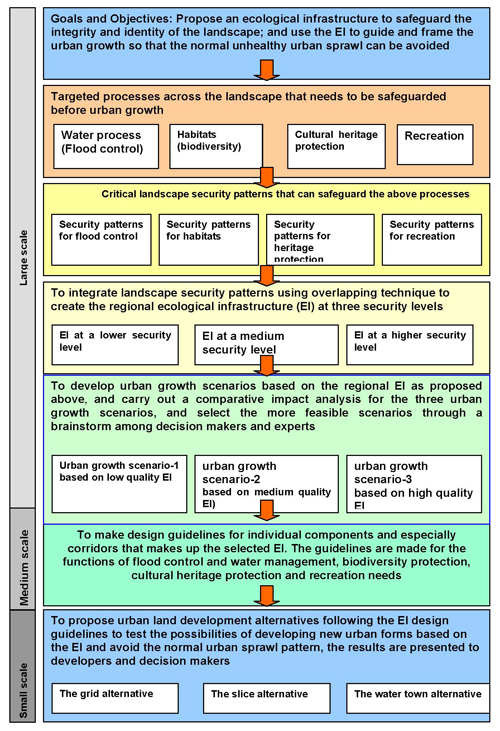
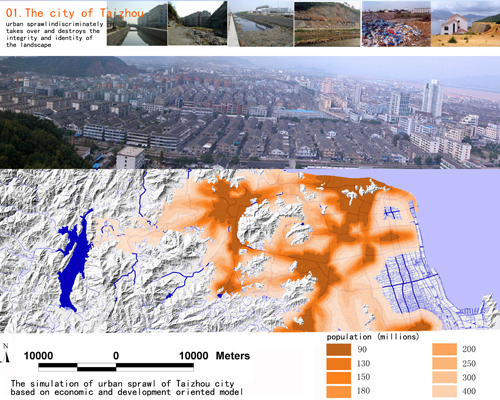
Figure 01 urban growth without EI
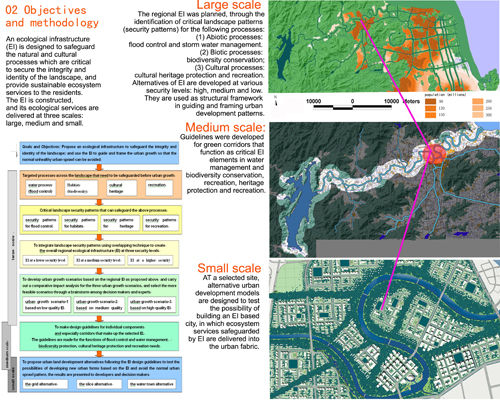
Figure 02 three scales
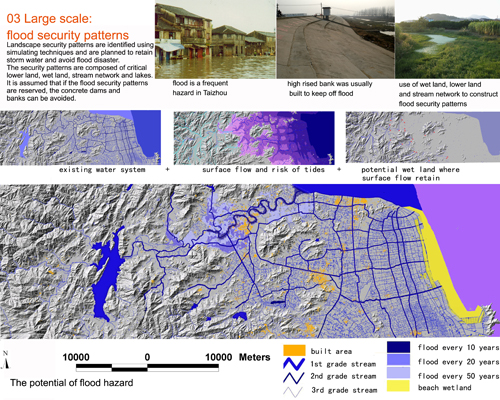
Figure 03 flood pattern
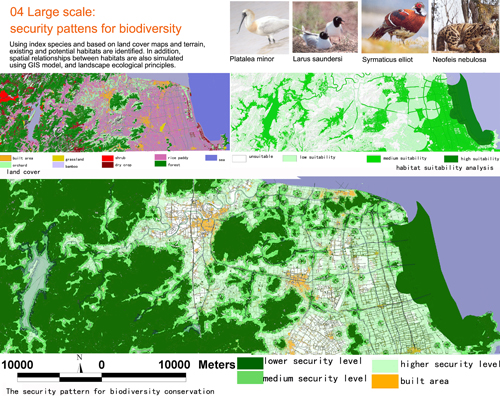
Figure 04 biosecurity pattern
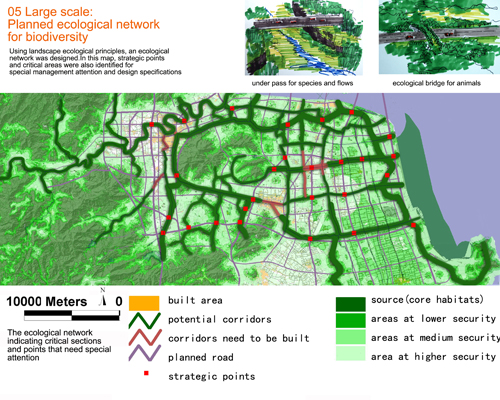
Figure 05 bio-sp Potential ecological corridors and strategic points
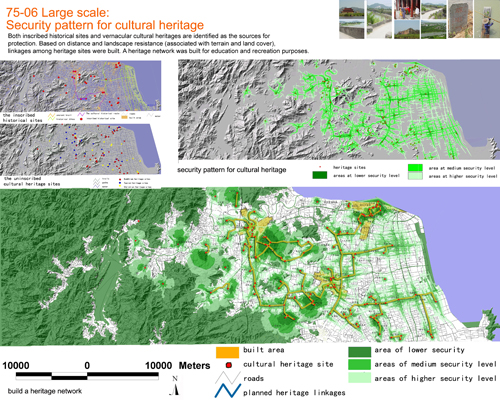
Figure 06 heritage corridor
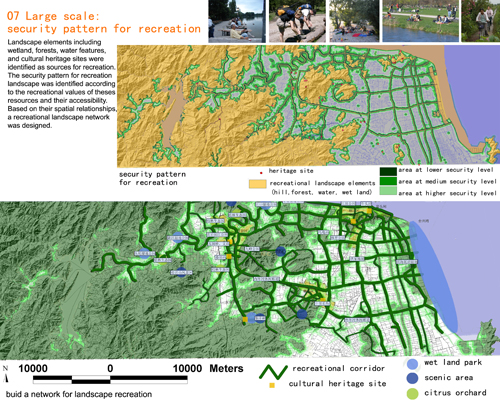
Figure 07 recreational corridors

Figure 08 overall EI

Figure 09 urban growth at low EI
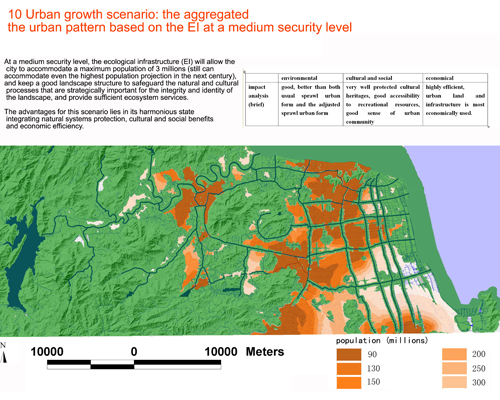
Figure 10 urban growth at medium EI
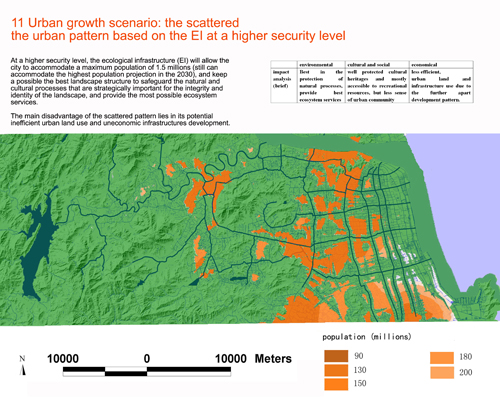
Figure 11 urban growth at higher EI
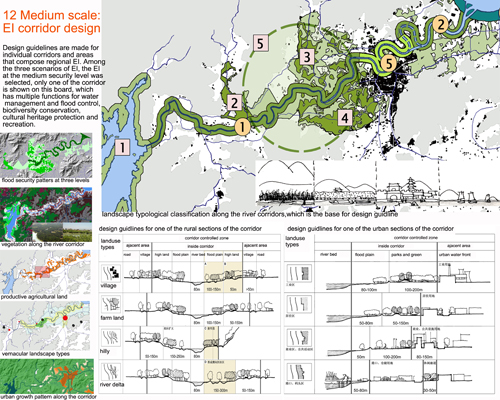
Figure 12 medium scale corridor
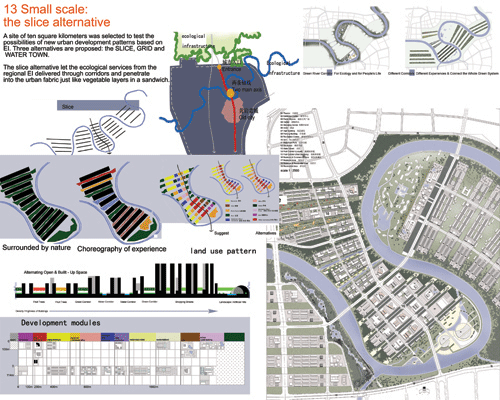
Figure 13 slice model
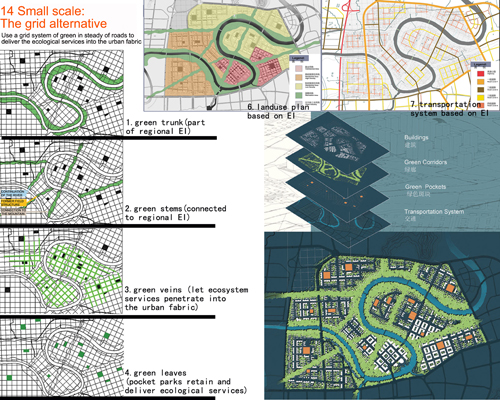
Figure 14 grid model
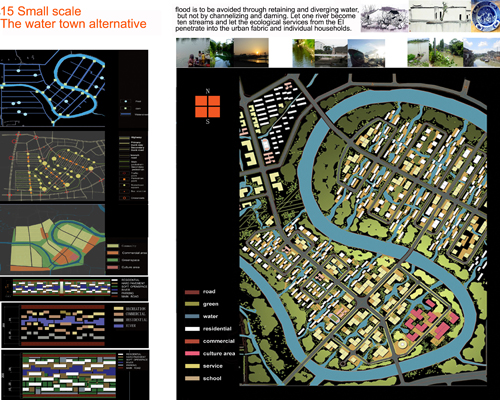
Figure 15 water town
